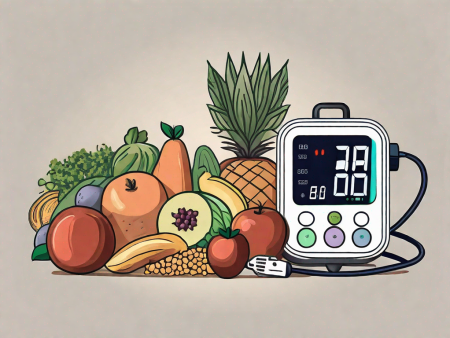Discover how internal organs such as the heart and lungs are impacted and affected by various factors.
How Do Internal Organs Like the Heart and Lungs Get Affected?
Having a healthy heart and lungs is crucial for a well-functioning body. These vital organs work tirelessly to keep us alive and well, but they can be affected by various factors. Understanding the function of the heart and lungs is the first step in comprehending how they may be impacted.
Understanding the Function of the Heart and Lungs

The Role of the Heart in the Human Body
Picture the heart as a dedicated pump, tirelessly circulating blood through every nook and cranny of your body. This essential organ allows oxygen and vital nutrients to reach each and every cell, ensuring their proper functioning. The heart, with its four chambers, works tirelessly to maintain a constant flow of blood throughout the body. The left side of the heart receives oxygen-rich blood from the lungs and pumps it out to the rest of the body, while the right side of the heart receives oxygen-poor blood from the body and pumps it to the lungs for oxygenation.
Within the heart, there is a complex network of blood vessels that ensure the smooth flow of blood. The coronary arteries, for example, supply the heart muscle itself with oxygen and nutrients, ensuring its own survival. The heart also has valves that prevent the backflow of blood, ensuring that blood flows in one direction only. The heart’s rhythmic contractions, known as the heartbeat, are controlled by a specialized electrical system that ensures the heart beats at a regular pace, pumping blood efficiently.
The Role of the Lungs in the Human Body
Now let’s turn our attention to the lungs, the unsung heroes of the respiratory system. These remarkable organs enable us to breathe in oxygen and expel carbon dioxide, keeping our bloodstream properly oxygenated. The lungs, with their spongy texture, are made up of millions of tiny air sacs called alveoli. It is within these alveoli that the exchange of gases takes place.
When we inhale, the diaphragm and intercostal muscles contract, expanding the chest cavity and creating a negative pressure. This negative pressure allows air to rush into the lungs, filling up the alveoli with oxygen. The oxygen then diffuses across the thin walls of the alveoli and into the bloodstream, where it binds to hemoglobin in red blood cells. At the same time, carbon dioxide, a waste product of cellular respiration, diffuses from the bloodstream into the alveoli and is expelled when we exhale.
The lungs also play a crucial role in maintaining the body’s acid-base balance. They regulate the levels of carbon dioxide in the bloodstream, which in turn affects the pH of the blood. By adjusting our breathing rate, the lungs can help maintain the delicate balance of acidity and alkalinity in our bodies.
Furthermore, the lungs are not just passive organs that facilitate gas exchange. They also produce surfactant, a substance that reduces the surface tension in the alveoli, preventing them from collapsing. This surfactant is particularly important for the proper functioning of the lungs, especially in premature infants who may not produce enough of it.
In conclusion, the heart and lungs work in perfect harmony to ensure the delivery of oxygen to every cell in our body. The heart pumps oxygenated blood to the body, while the lungs facilitate the exchange of gases, ensuring that oxygen is taken in and carbon dioxide is expelled. Without these vital organs, our bodies would not be able to function properly. So, let’s take a moment to appreciate the incredible work that our heart and lungs do every single day.
Factors that Can Affect the Heart and Lungs

Lifestyle Factors
Our choices and lifestyle significantly impact the health of our heart and lungs. Poor diet, lack of exercise, smoking, excessive alcohol consumption, and chronic stress are among the main culprits to watch out for. It’s important to prioritize a healthy lifestyle to ensure the optimal functioning of these vital organs.
A poor diet, high in saturated fats and processed foods, can lead to the accumulation of plaque in the arteries, increasing the risk of heart disease and impairing lung function. On the other hand, a balanced diet rich in fruits, vegetables, whole grains, and lean proteins can provide the necessary nutrients to support a healthy cardiovascular system and promote lung health.
Regular exercise is crucial for maintaining a strong heart and lungs. Engaging in physical activities such as jogging, swimming, or cycling can improve cardiovascular fitness, strengthen the heart muscle, and enhance lung capacity. Additionally, exercise helps to reduce stress levels, which in turn benefits heart health and respiratory function.
Smoking is one of the most detrimental habits for the heart and lungs. The harmful chemicals in tobacco smoke can damage the blood vessels, increase the risk of blood clots, and cause chronic inflammation in the lungs. Quitting smoking is essential for improving overall cardiovascular and respiratory health.
Excessive alcohol consumption can also have negative effects on the heart and lungs. Heavy drinking can lead to high blood pressure, irregular heart rhythms, and weakened heart muscle. Moreover, alcohol can impair lung function and increase the risk of respiratory infections. Moderation is key when it comes to alcohol consumption for maintaining a healthy heart and lungs.
Chronic stress can take a toll on the heart and lungs. Prolonged stress can lead to increased blood pressure, heart rate, and inflammation, which can contribute to the development of heart disease and respiratory issues. Implementing stress management techniques such as meditation, deep breathing exercises, or engaging in hobbies can help reduce stress levels and promote cardiovascular and respiratory well-being.
Environmental Factors
Don’t be fooled into thinking that our internal organs are completely shielded from external influences. Environmental factors can have a significant impact on the health of our heart and lungs. It’s important to be aware of our surroundings and take appropriate precautions when necessary.
Air pollution, both outdoor and indoor, can have detrimental effects on cardiovascular and respiratory health. Fine particulate matter, toxic gases, and other pollutants can enter the lungs and bloodstream, causing inflammation, oxidative stress, and damage to the heart and lungs. Minimizing exposure to air pollution by avoiding heavily polluted areas, using air purifiers, and wearing masks can help protect these vital organs.
Secondhand smoke is another environmental factor that can harm the heart and lungs. Inhaling the smoke from other people’s cigarettes can increase the risk of heart disease, lung cancer, and respiratory infections. Avoiding areas where smoking is allowed and ensuring a smoke-free environment is crucial for maintaining optimal cardiovascular and respiratory health.
Exposure to toxins in the environment, such as asbestos, radon, and certain chemicals, can also pose a threat to the heart and lungs. These substances can cause damage to the cells and tissues, leading to the development of heart disease, lung cancer, and other respiratory conditions. Taking necessary precautions, such as wearing protective gear and ensuring proper ventilation in workspaces, can help minimize the risk of exposure to these harmful substances.
Altitude can also affect the heart and lungs. At higher altitudes, the air is thinner, containing less oxygen. This can put additional strain on the heart and lungs, especially for individuals who are not acclimated to high altitudes. It’s important to gradually adjust to higher altitudes and be mindful of any symptoms of altitude sickness, such as shortness of breath or chest pain.
Genetic Factors
While we can’t choose our genes, they still play a role in determining our susceptibility to heart and lung diseases. Family history of conditions like heart disease, high blood pressure, or asthma can increase our chances of developing similar issues. It’s important to be aware of our genetic predispositions and take proactive steps to safeguard our cardiovascular and respiratory health.
Regular check-ups and screenings can help identify any potential genetic risks for heart and lung diseases. By monitoring blood pressure, cholesterol levels, and lung function, healthcare professionals can detect early signs of problems and provide appropriate interventions to manage or prevent the development of these conditions.
Adopting a healthy lifestyle becomes even more crucial for individuals with a genetic predisposition to heart and lung diseases. By making conscious choices to eat well, exercise regularly, avoid smoking, and manage stress, individuals can mitigate the impact of their genetic factors and maintain optimal cardiovascular and respiratory health.
Furthermore, advancements in genetic testing and personalized medicine have allowed for a better understanding of individual genetic variations and their impact on heart and lung health. This knowledge can help guide healthcare professionals in tailoring treatment plans and interventions that are specifically suited to an individual’s genetic makeup.
In conclusion, a multitude of factors can affect the health of our heart and lungs. Lifestyle choices, environmental influences, and genetic factors all play a role in determining the well-being of these vital organs. By understanding and addressing these factors, we can take proactive steps to maintain optimal cardiovascular and respiratory health, ensuring a better quality of life for ourselves and future generations.
Common Diseases of the Heart and Lungs
Heart Disease and Its Impact
Heart disease is a broad term encompassing various conditions that weaken or damage the heart. From coronary artery disease and heart attacks to heart failure and arrhythmias, this category certainly keeps our hearts on their metaphorical toes. The impact of heart disease can be life-altering, underscoring the importance of prevention and timely intervention.
Lung Disease and Its Impact
Lung diseases, on the other hand, mainly affect the respiratory system. Conditions like asthma, chronic obstructive pulmonary disease (COPD), and lung cancer can significantly impair lung function. Breathlessness, coughing, and reduced physical endurance are some of the ways lung diseases can make their presence known, reminding us of the crucial role of these essential organs.
Symptoms Indicating Heart and Lung Issues
Recognizing Heart Disease Symptoms
The heart might be a master at hiding its ailments, but it does leave behind some clues. Chest pain or discomfort, shortness of breath, fatigue, dizziness, and irregular heartbeat are all red flags that shouldn’t be ignored. Being familiar with these symptoms allows for early identification and prompt medical attention, potentially preventing further heart-related complications.
Identifying Lung Disease Symptoms
Lung diseases, too, come with their own set of warning signs. Persistent coughing, wheezing, chest tightness, and frequent respiratory infections can indicate trouble brewing in the lungs. Listening to our bodies and recognizing these symptoms can help us take action, seeking the necessary care and support to maintain optimal respiratory health.
Prevention and Treatment of Heart and Lung Diseases
Preventive Measures for Heart Health
To keep our hearts healthy and happy, prevention is key. Maintaining a well-balanced diet, staying physically active, managing stress, and avoiding harmful habits like smoking can significantly reduce the risk of heart disease. Regular check-ups and screenings can also catch any potential issues early on, allowing for timely intervention and prevention of further damage.
Preventive Measures for Lung Health
Caring for our lungs involves similar lifestyle considerations. Avoiding exposure to secondhand smoke and air pollutants, quitting smoking, and practicing good respiratory hygiene are paramount. Incorporating regular exercise, eating a nutritious diet, and keeping up with vaccinations can all contribute to keeping our lungs free from disease and functioning at their best.
Treatment Options for Heart Disease
When it comes to heart disease, treatment options can vary depending on the specific condition and severity. Lifestyle modifications, medications, surgical interventions, and cardiac rehabilitation programs are all potential avenues for managing heart-related issues. Working closely with healthcare professionals and adhering to prescribed treatments can significantly improve heart health and overall quality of life.
Treatment Options for Lung Disease
Lung disease treatment, too, depends on the specific diagnosis and its severity. Medications, inhalers, oxygen therapy, pulmonary rehabilitation, and, in severe cases, surgical intervention may all be part of the treatment plan. Collaborating with healthcare providers and adopting lifestyle changes can help individuals with lung conditions breathe easier and enhance their overall well-being.
So, as we navigate life with our hearts and lungs, it’s essential to be mindful of the factors that can affect them. From lifestyle choices and genetics to environmental influences, these vital organs require our care and attention. By understanding their function, keeping an eye out for symptoms, and taking preventive measures, we can ensure a healthier future for our hardworking internal heroes.







Thanks for sharing. I read many of your blog posts, cool, your blog is very good.
Thank you for your sharing. I am worried that I lack creative ideas. It is your article that makes me full of hope. Thank you. But, I have a question, can you help me?